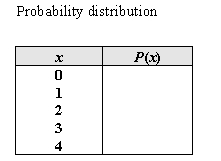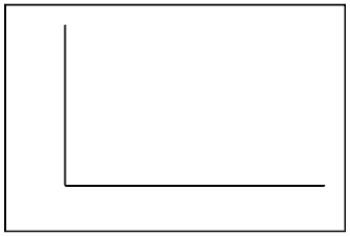Essay
The famous physicist, Ernest Rutherford, was a pioneer in the study of radioactivity using electricity. In one experiment he observed the number of particles reaching a counter during time 1,700 intervals of 7.5 seconds each. The number of intervals that had 0 - 4 particles reaching the counter is given in the table below.  Let the random variable x = number of particles counted in a 7.5 second time period.
Let the random variable x = number of particles counted in a 7.5 second time period.
a) Fill in the table below with the estimated probability distribution of x, and sketch a probability histogram for x. Probability histogram
Probability histogram 
b) Using the estimated probabilities in part (a), estimate the following: i) P(x = 1), the probability that 1 particle was counted in 7.5 seconds. ii) P(x < 3), the probability that fewer than 3 particles were counted. iii) P(x ≥ 3), the probability that at least 3 particles were counted.
Correct Answer:

Verified
a) Probability Distribution:  ...
...View Answer
Unlock this answer now
Get Access to more Verified Answers free of charge
Correct Answer:
Verified
View Answer
Unlock this answer now
Get Access to more Verified Answers free of charge
Q19: The time that it takes a randomly
Q20: The sales of a newsmagazine vary from
Q21: In a major study by the statistics
Q22: The distribution of all values of a
Q23: Briefly describe how one would decide which
Q25: In a major study by the statistics
Q26: For a discrete random variable x, <img
Q27: When driving the nation's highways Anna is
Q28: For a continuous random variable x, the
Q29: For a discrete random variable, <img src="https://d2lvgg3v3hfg70.cloudfront.net/TB7678/.jpg"